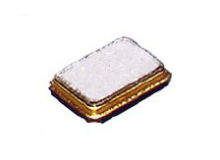Euroquartz to Show Latest Frequency Control Components at Embedded Design Show and Electronica 2018

Frequency control specialist Euroquartz is exhibiting its latest ranges of frequency control products at the forthcoming Embedded Design Show (EDS 2018, 17-18 October, Ricoh Arena, Coventry, UK) and Electronica (13-16 November, Messe, Munich, Germany).
Highlights include recently launched high-speed current steering logic (HCSL) versions of the company’s ultra-low phase jitter EQJF clock oscillator range, ultra-low power, fast start-up, high-shock resistance oscillators from Statek Inc. and a range of switchable crystal oscillators offering users the ability to provide four different frequencies.
Offering a range of frequencies from 50MHz to 700MHz, ultra-low phase jitter EQJF clock oscillators with HCSL outputs deliver a less ‘noisy’ solution compared with static logic types, a major benefit for mixed low voltage signal processing and essential in applications such as optical communications, PCI-Express and Intel chipsets etc. With phase jitter of 150fs typical, 300fs maximum, this new generation of oscillators is produced in the UK and available for delivery in one to two weeks. HCSL offers the fastest switching speeds with power consumption – at 94mA typical, 115mA maximum – lying between LVCS and LVPECL types.
EQJF series HCSL oscillators feature a choice of supply voltages – 1.8V, 2.5V or 3.3V – with frequency stability specifications of ±25, ±50 and ±100ppm over both commercial (-10°C to 70°C) and industrial (-40°C to 85°C) temperature ranges available as standard. Tighter custom options can be supplied to special order.
Complementing the EQJF series is the EQVJF range of voltage-controlled crystal oscillators (VCXOs) offering frequencies from 150MHz to 700MHz with identical options and similar RMS phase jitter performance.
Also on show will be Statek’s CXOLHG oscillator, offering ultra-low power, fast start-up and high-shock resistance characteristics in a surface-mount package measuring just 3.2mm x 1.5mm x 0.95mm. Features include frequency output of 32.768kHz and typical low-power consumption of 1µA at 3.3V supply voltage. This is comparable with a tuning fork design while fast start-up time of 3ms typical and tight frequency stability are as good as those obtainable with AT-cut crystal designs. The new oscillator is also capable of withstanding shock up to 30,000g and above, significantly higher than that achieved by tuning fork designs.
With full military testing available, Statek’s CXOLHG oscillator also offers low-acceleration sensitivity, typically 0.5ppb/g, essential in aerospace applications.
Specifications include supply voltage range from 1.8V to 3.3V, calibration tolerance of ±25ppm, output load (CMOS) of 15pF and ageing of ±3ppm in the first year. Frequency stability is ±10 to ±50ppm over commercial temperature range from 0°C to 70°C, ±20 to ±50ppm over industrial temperature range from -40°C to 85°C, and ±35 to ±50ppm over military temperature range from -55°C to 125°C. Shock options encompass 30,000g, 50,000g, 75,000g and 100,000g (0.3ms, ½ sine) while vibration survival is 20g, 10Hz to 2,000Hz, swept sine.
Euroquartz is also showing its latest range of switchable crystal oscillators offering users the ability to provide four different frequencies. The new QuikXO HC_JF series oscillators are available in frequencies from 15MHz to 2,100MHz with a choice of outputs, including LVCMOS (up to 250MHz), LVPECL, LVDS and CML differential. High-current steering logic (HCSL) differential outputs are available for frequencies up to 700MHz. Integrated phase jitter performance of 150fs maximum makes these crystal oscillators particularly suitable for high-frequency applications.
QuikXO HC_JF series crystal oscillators are available at low cost and can be delivered in days for prototypes with a choice of supply voltages – 1.8V, 2.5V or 3.3V – across the range apart from LVPECL with 2.5V and 3.3V only. Customers can select any four frequencies in the range and the oscillator can switch to each as required, useful in frequency bus distribution applications on multi-processor boards where several frequencies are required for the different processors. The four chosen frequencies can all be synchronised from the single crystal oscillator instead of trying to sequence multiple clocks to achieve switching in of the various processors.
Euroquartz is exhibiting on stand F2 at EDS and Hall A6 Booth 530 at Electronica.






